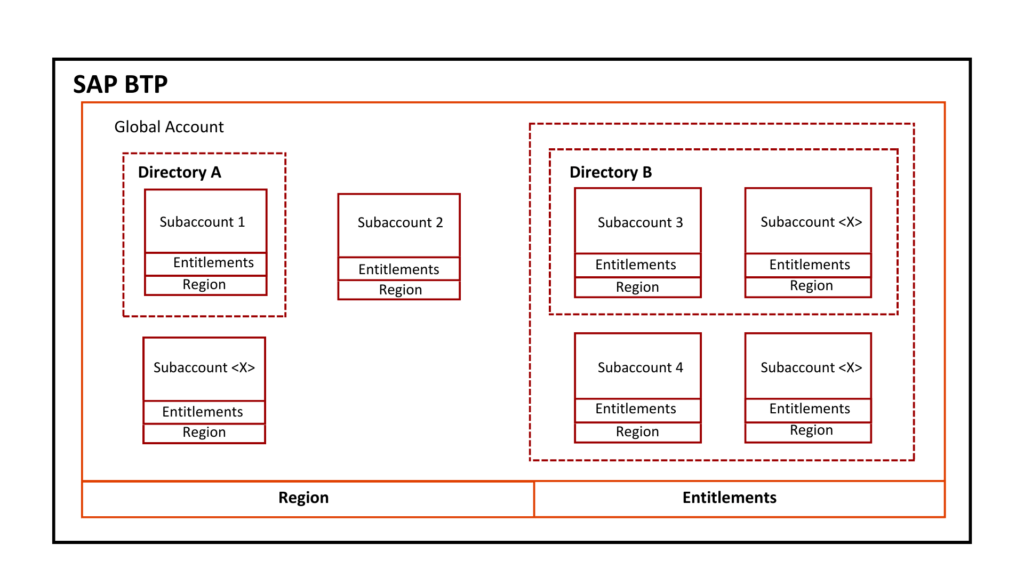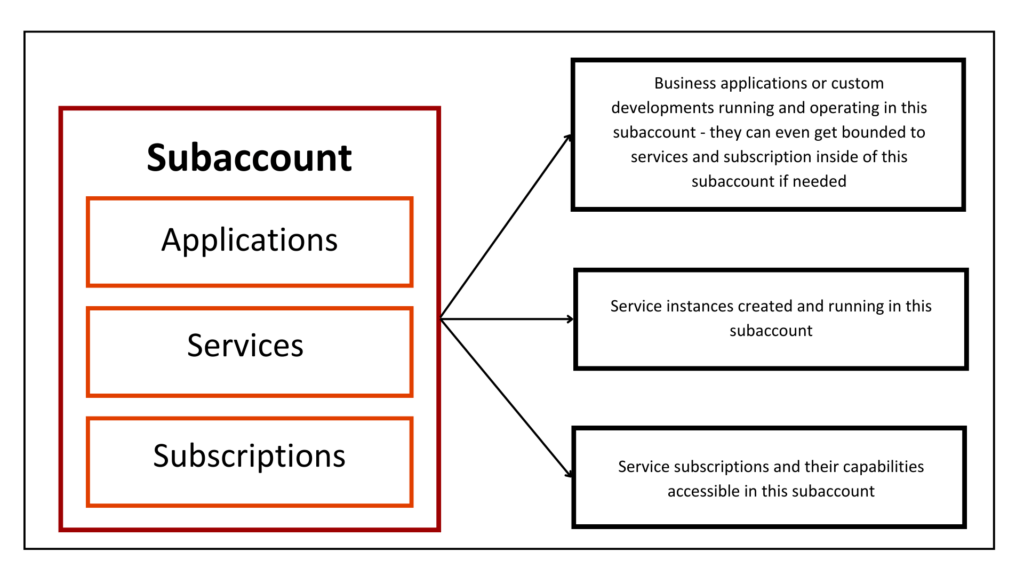SAP BTP (Business Technology Platform): Architecture Overview

Hey guys, welcome back to part 2 of the SAP BTP overview, this blog of the series emphasizes on SAP BTP architecture. With no further due let’s get started
Sneak-peek of the previous blog,
In our earlier Blog, we elaborated on learning What’s an SAP BTP platform, its key solution offerings, the development environment, the available commercial models to use, etc. If you haven’t read it yet, do check it out before deep diving into its architecture.
Do check it out by clicking here!
When anyone starts to build a tool, the foremost activity is to draft its architecture by carefully understanding the functionalities that must be incorporated into the tool. Your architecture is something that defines your product.
SAP BTP Architecture
The high-level architecture of the Business Technology Platform incorporates a five-level hierarchy each denoted by a significant utilization factor. The hierarchy is as follows:
- Global accounts
- Directory
- Subaccounts
- Entitlements
- Region
Let’s look into each one of their functionalities and importance in detail,
Global Accounts:
It acts as the management hub of your entire platform across all regions, it resembles the realization contract you’ve agreed with. The global accounts obtain the entitled quotas to utilize the platform, which you subsequently allocate and distribute to the subaccount for actual use.
Directory:
Directories enable you to arrange and manage your subaccounts based on your technical and commercial requirements. To form a hierarchy, a directory can contain directories and subaccounts. It is optional to use directories to organize other directories and subaccounts; you may still establish subaccounts directly under your global account. You can build a seven-level hierarchical system by having the global account on the top level of a particular route, and the lowest as a subaccount, therefore you can have up to 5 levels of directories.
Subaccounts:
You can organize a global account using subaccounts to meet the members, authorizations, and entitlements needs of your project and organization. One or more subaccounts may be found in a global account, and these are where you launch apps, consume services and manage subscriptions. A global can have multiple subaccounts which are independent of one other. When planning your landscape and overall architecture, it’s very important to plan your account in terms of security, data management, data migration, member management, integration, and other factors.
Entitlements:
Entitlements are the service plans you’ve chosen to consume as per your license agreement with SAP. In other words, entitlement is your capacity to endow and utilize the resources offered in your global account.
Regions:
Any application you develop can be deployed in various geographical regions. Each region indicates the location of hosting your application, data, or services. A region is chosen within the level of your subaccount level holding a one-to-one relationship. You can select your region depending on the following factors: For example, selecting a zone adjacent to the user might improve application performance (response time, latency). The key components of the Regions are:
Infrastructure: One of SAP’s Infrastructure as a Service (IaaS) partners, such as Amazon Web Services (AWS), Microsoft Azure, Google Cloud Platform (GCP), or Alibaba Cloud, provides the infrastructure layer for a region.
Environments: Environments make up SAP BTP’s real Platform as a Service, which enables the creation and management of business applications. Each environment has the runtimes, technologies, and building blocks you need to create apps.
Services: The creation of business applications and other platform services on SAP BTP is enabled, accelerated, or made easier by services. All services are found at the SAP Discovery Center.
Data: Services such as the SAP HANA Cloud service or the SAP Data Warehouse Cloud are used to manage your business and application data.
Applications: You deploy business applications in a region that utilizes and builds upon the layer’s underneath.
To Conclude
The well-defined architecture of the SAP BTP platform allows you to accelerate your innovation toward building an Intelligent Enterprise. The global accounts act as the supreme level for managing the entire operations involved in developing your application, intelligently managing your data, and analyzing it. Let’s get to know more about the tool and its services in the next part, until then stay tuned with us!
In case of further queries, feel free to contact info@kaartech.com; Our experts always got your back in your towards digitalization!
FAQ’S
What are Global accounts in SAP BTP?
Global accounts of SAP BTP act as the management hub of an entire platform across all regions, it resembles the realization contract. The global accounts obtain the entitled quotas to utilize the platform, which subsequently allocate and distribute to the subaccount for actual use.
What are the five-level hierarchy steps of SAP BTP?
The five-level hierarchy of SAP BTP includes: Global Accounts, Directory, Subaccounts, Entitlements, and Region.
What is a directory in SAP BTP?
A directory contains other directories and subaccounts to create a hierarchy, it helps organize and manage your subaccounts according to your business needs. You can create subaccounts directly under your global account; using directories to organize additional directories and subaccounts is optional.
What is the region in SAP BTP and its components?
Any application you create can be installed in a variety of regions. Each region identifies the place where your application, data, or services are hosted. A region is picked to carry a one-to-one relationship at the level of your subaccount. The various components are applications, data, services, infrastructure, and environments.



